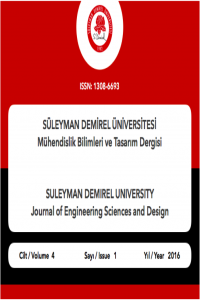Abstract
Matlog is a collection of computational routines and data that can be used within Matlab to implement a variety of different logistics-engineering-related tasks and provides a means to script the pre- and post-processing needed to interface with solvers like CPLEX. A detailed example of the use of Matlog to solve a facility location and allocation problem is presented and the use of Matlog in an educational environment is discussed. Matlog is a collection of computational routines and data that can be used within Matlab to implement a variety of different logistics-engineering-related tasks. It consists of Matlab functions that either directly implement solution techniques or provide a means to script the pre- and post-processing needed to interface with solvers like CPLEX. It provides a uniform, platform-independent environment and is available for download at Kay (2015). The routines in Matlog can be grouped into the following categories
References
- Campbell, A., Goentzel, J., Savelsbergh, M. (2000), “Experiences with the use of supply chain management software in education,” Production and Operations Management, Vol. 9, No. 1, pp. 66–80.
- L. Cooper, L. (1963), “Location-allocation problems,” Operations Research, Vol. 11, pp. 331–343.
- Daskin, M. (1995), Network and Discrete Location: Models, Algorithms, and Applications, Wiley, New York. Kay, M. (2015), “Matlog: Logistics Engineering Matlab Toolbox,” http://www.ise.ncsu.edu/kay/matlog (last accessed on July 9, 2015).
- Funaki, K. (2009), “State of the Art Survey of Commercial Software for Supply Chain Design,” Supply Chain and Logistics Institute, Georgia Tech, https://www.scl.gatech.edu/downloads/
- GTSCL_SCDesign_Software_Survey.pdf (last accessed on July 9, 2015).
Abstract
Matlog is a collection of computational routines and data that can be used within Matlab to implement a variety of different logistics-engineering-related tasks and provides a means to script the pre- and post-processing needed to interface with solvers like CPLEX. A detailed example of the use of Matlog to solve a facility location and allocation problem is presented and the use of Matlog in an educational environment is discussed. Matlog is a collection of computational routines and data that can be used within Matlab to implement a variety of different logistics-engineering-related tasks. It consists of Matlab functions that either directly implement solution techniques or provide a means to script the pre- and post-processing needed to interface with solvers like CPLEX. It provides a uniform, platform-independent environment and is available for download at Kay (2015). The routines in Matlog can be grouped into the following categories
Keywords
References
- Campbell, A., Goentzel, J., Savelsbergh, M. (2000), “Experiences with the use of supply chain management software in education,” Production and Operations Management, Vol. 9, No. 1, pp. 66–80.
- L. Cooper, L. (1963), “Location-allocation problems,” Operations Research, Vol. 11, pp. 331–343.
- Daskin, M. (1995), Network and Discrete Location: Models, Algorithms, and Applications, Wiley, New York. Kay, M. (2015), “Matlog: Logistics Engineering Matlab Toolbox,” http://www.ise.ncsu.edu/kay/matlog (last accessed on July 9, 2015).
- Funaki, K. (2009), “State of the Art Survey of Commercial Software for Supply Chain Design,” Supply Chain and Logistics Institute, Georgia Tech, https://www.scl.gatech.edu/downloads/
- GTSCL_SCDesign_Software_Survey.pdf (last accessed on July 9, 2015).
Details
| Primary Language | English |
|---|---|
| Subjects | Engineering |
| Journal Section | Research Articles |
| Authors | |
| Publication Date | April 28, 2016 |
| Submission Date | November 17, 2015 |
| Published in Issue | Year 2016 Volume: 4 Issue: 1 |


